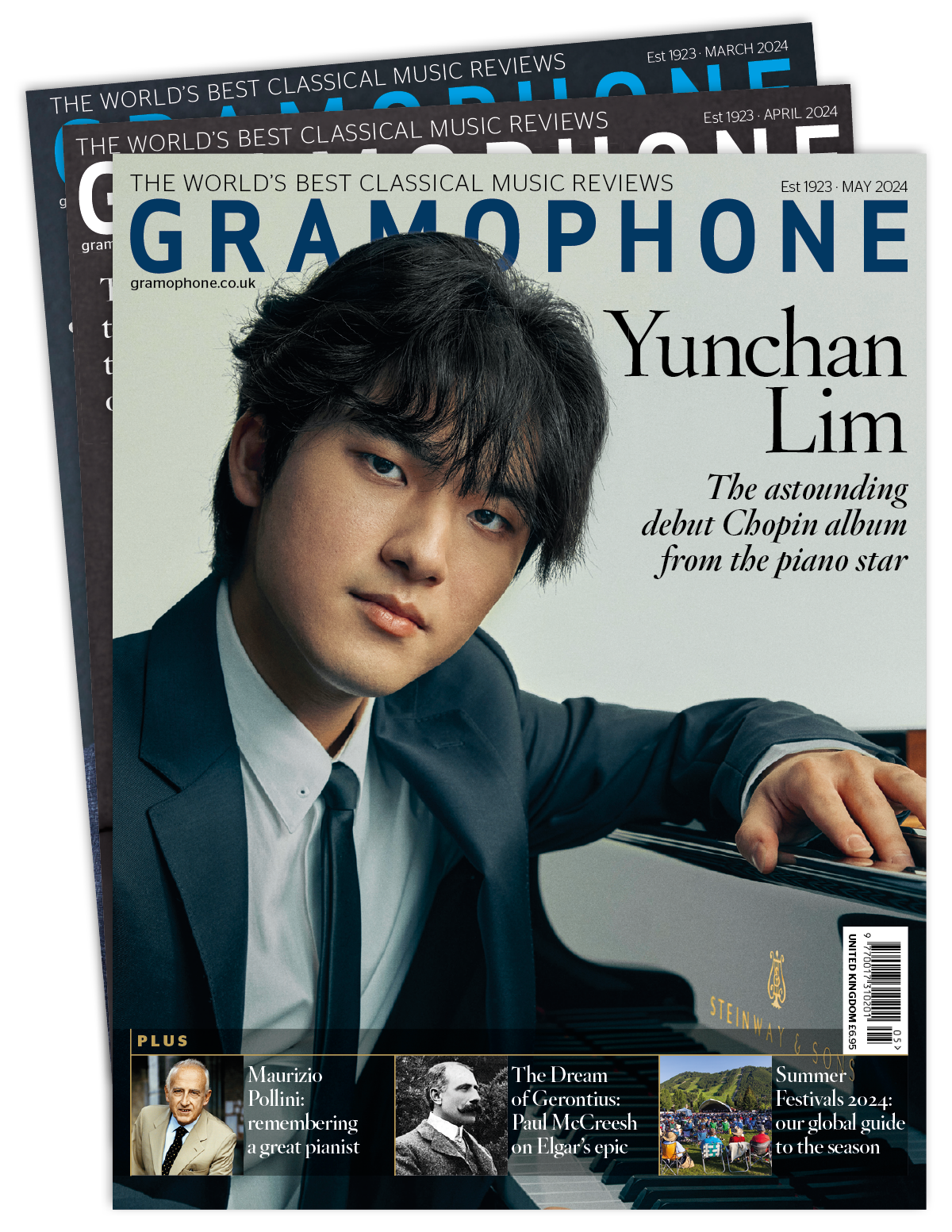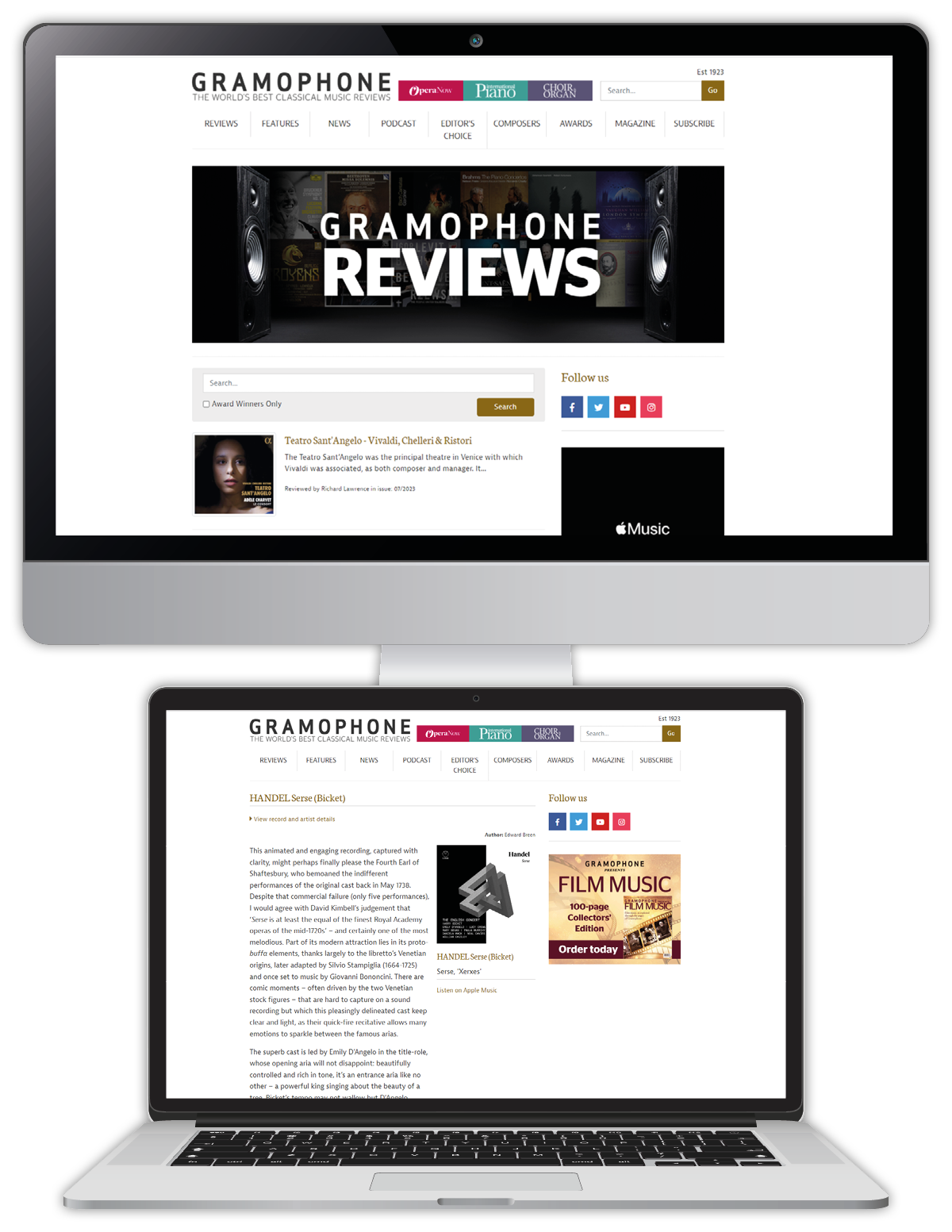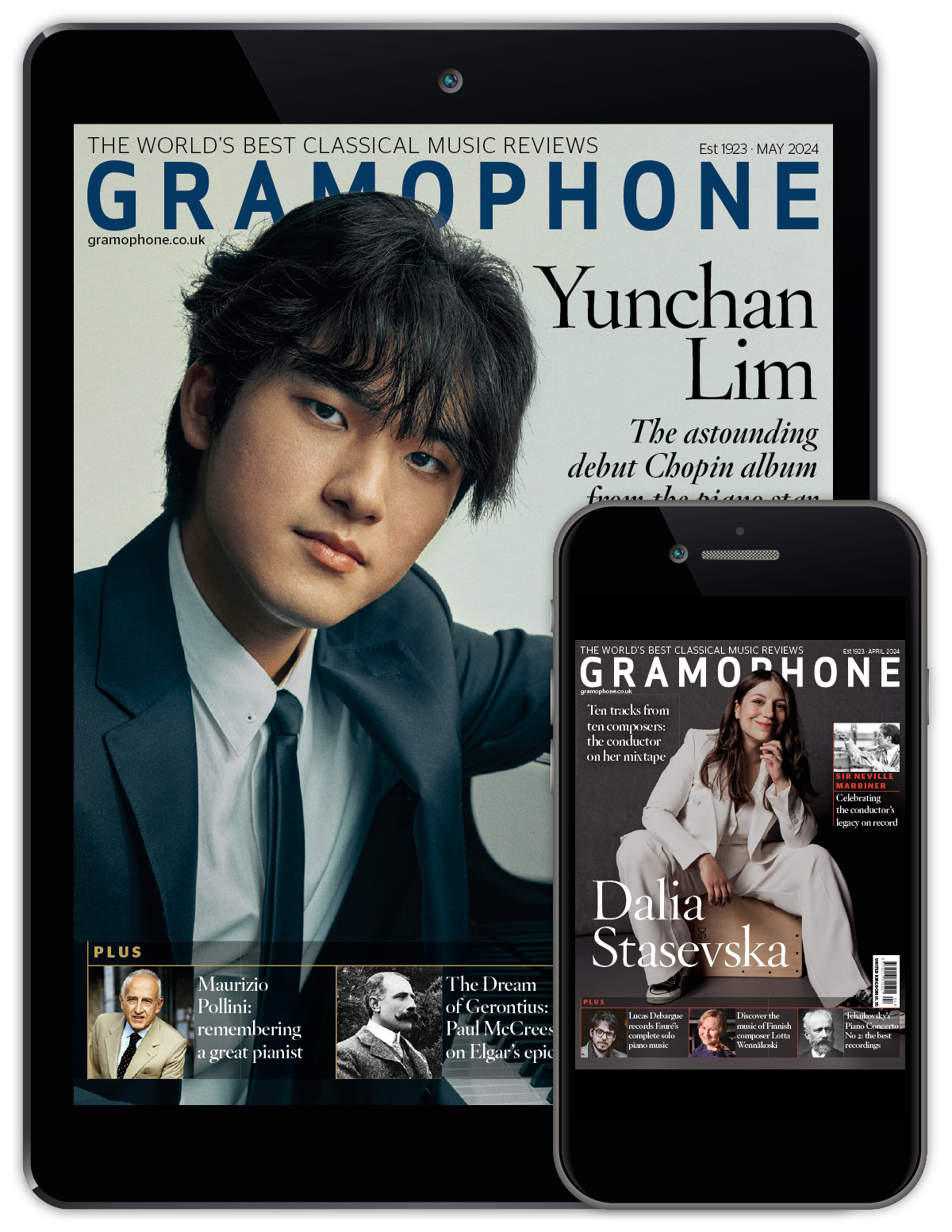Register now to continue reading
Thank you for visiting Gramophone and making use of our archive of more than 50,000 expert reviews, features, awards and blog articles. Why not register today and enjoy the following great benefits:
- Free access to 5 subscriber-only reviews per month
- Unlimited access to news, features, blogs, awards and artist content
- Weekly email newsletter
Explore the world’s largest classical music catalogue on Apple Music Classical.
Included with an Apple Music subscription. Download now.

Gramophone Digital Club
- Digital Edition
- Digital Archive
- Reviews Database
- Events & Offers
From £9.20 / month
Subscribe
Gramophone Club
- Print Edition
- Digital Edition
- Digital Archive
- Reviews Database
- Events & Offers
From £11.45 / month
Subscribe
If you are a library, university or other organisation that would be interested in an institutional subscription to Gramophone please click here for further information.






